Main achievements in 2020 (based on Government Contract)
approved by ISSP RAS Academic Board on December, 14, 2020
(protocol № 28)
Metallic state in a strongly interacting spinless two-valley electron system in two dimensions
M.Yu. Melnikov, A.A. Shashkin, V.T. Dolgopolov et al
We have studied the strongly interacting, two-valley two-dimensional (2D) electron system in ultrahigh mobility SiGe/Si/SiGe quantum wells in parallel magnetic fields strong enough to completely polarize the electron spins thus making the electron system "spinless". It occurs that the metallic temperature dependence of the resistivity, although weaker than that in the absence of magnetic field, still remains strong even when the spin degree of freedom is removed. Several independent methods have been used to establish the existence of the genuine MIT in the spinless two-valley 2D system. This is in contrast to the previous results obtained on more disordered silicon samples, where the polarizing magnetic field causes a complete quench of the metallic temperature behavior.
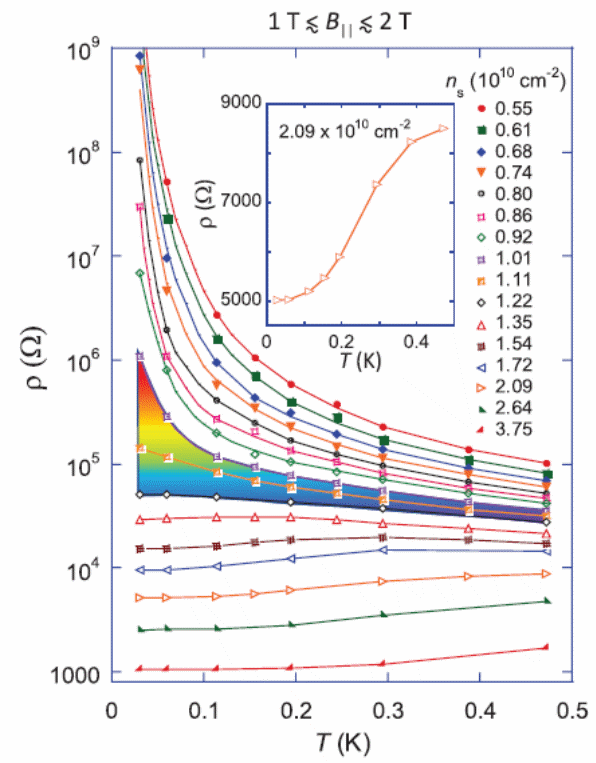 Figure.
Resistance of an electronic system in a SiGe / Si / SiGe quantum well
in a spin-polarizing magnetic field as a function of temperature for
various electron densities. The used magnetic fields are within 1 and
2 T. The critical region near the metal-insulator junction is shown
in color gradation. The inset shows the dependence for ns
= 2.09 × 1010
cm −2 on a large scale.
Figure.
Resistance of an electronic system in a SiGe / Si / SiGe quantum well
in a spin-polarizing magnetic field as a function of temperature for
various electron densities. The used magnetic fields are within 1 and
2 T. The critical region near the metal-insulator junction is shown
in color gradation. The inset shows the dependence for ns
= 2.09 × 1010
cm −2 on a large scale.
Publication
Melnikov,
M.Y. Metallic state in a strongly interacting spinless two-valley
electron system in two dimensions / M.Yu. Melnikov, A.A. Shashkin,
V.T. Dolgopolov, S.-H. Huang, C.W. Liu, Amy Y.X. Zhu, S.V. Kravchenko
// Physical Review B. – 2020. – Vol. 101, Iss. 4. – P. 45302.
Section II, Physical sciences, Subsection 8, Theme 0032-2019-0015 “Collective phenomena in electron and exciton systems in semiconductor nanostructures "
Discovery of “superluminal” electromagnetic plasma waves
V. M. Muravev, P. A. Gusikhin, I. V. Kukushkin
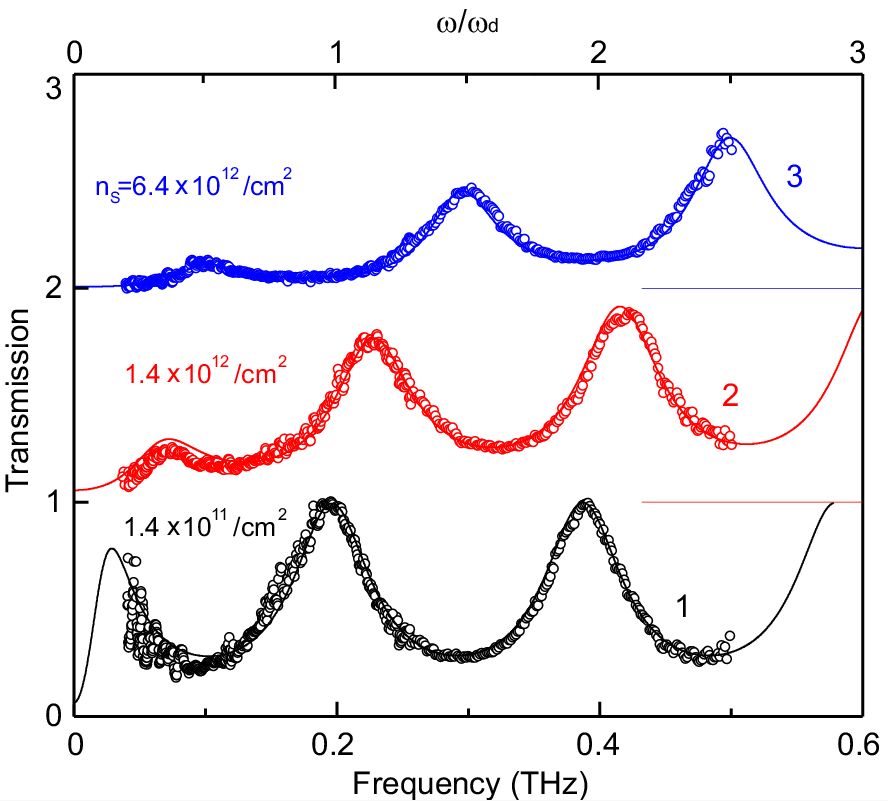
We report the experimental discovery of “superluminal” electromagnetic plasma waves were in the electromagnetic response of high-quality GaAs/AlGaAs two-dimensional electron systems nanostructures grown on a dielectric substrate.
We measure their plasma wave spectrum and magnetic dispersion. It is established that at high densities of two-dimensional electrons there is a strong hybridization between the plasma and the Fabry-Perot light modes. We show that the excitation of new plasma waves is closely related to the problem of local amplification of the electromagnetic field. The result obtained can potentially increase the sensitivity of terahertz and infrared electromagnetic radiation detectors by orders of magnitude.
Publication:
Gusikhin,
P.A. Superluminal electromagnetic two-dimensional plasma waves / P.A.
Gusikhin, V.M. Muravev, I.V. Kukushkin // Physical Review B. –
2020. – Vol. 102, Iss. 12. – P. 121404
Section II, Physical sciences, Subsection 8, Theme 0032-2019-0015 “Collective phenomena in electron and exciton systems in semiconductor nanostructures"
Neutron studies of tantalum dihydride
M.A. Kuzovnikov, V.E. Antonov, V.I. Kulakov, V.M. Gurev et al
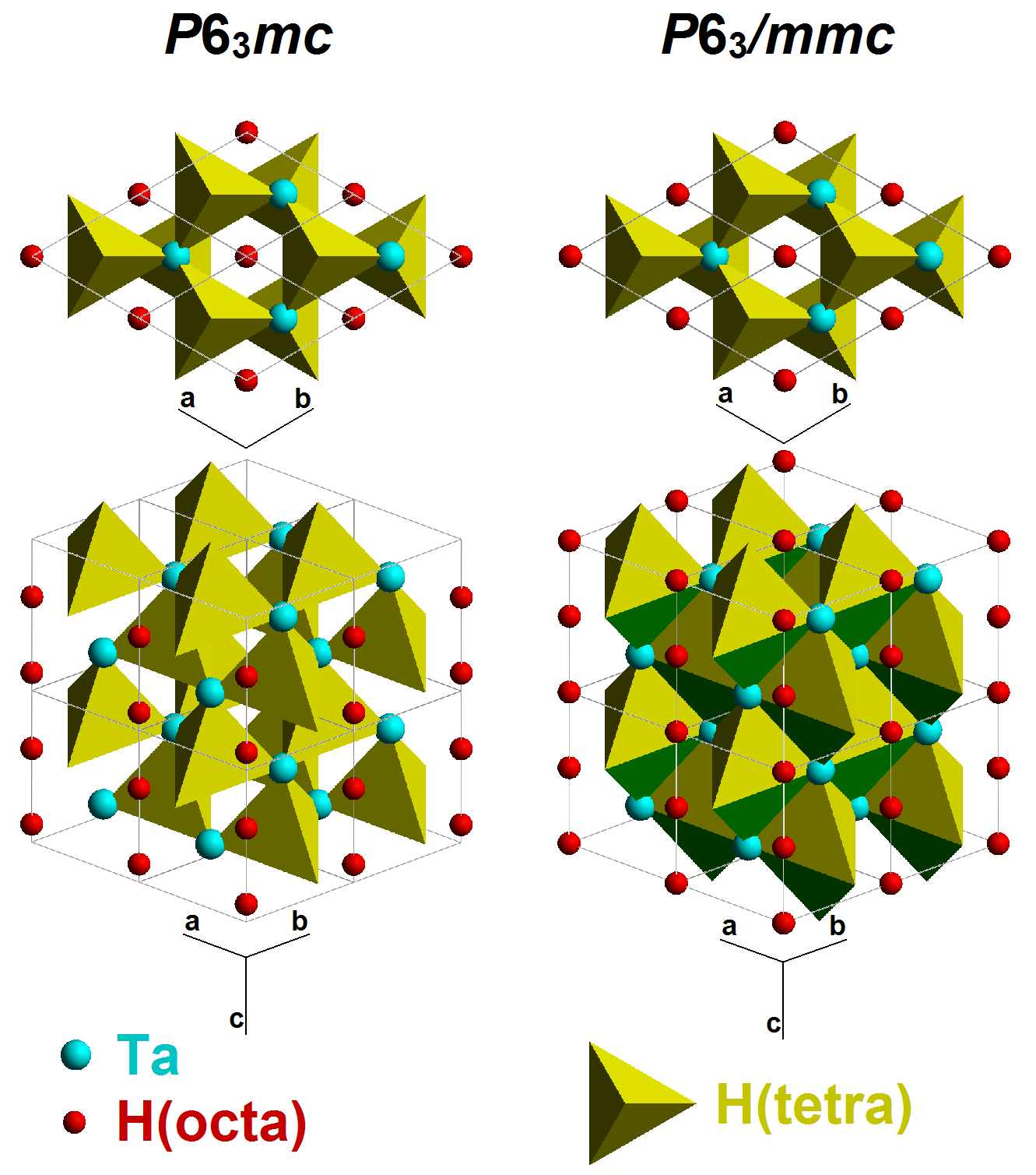
A massive (about 300 mg) single-phase sample of tantalum dihydride was synthesized at a hydrogen pressure of 9 Gpa. Its complete crystal structure was studied by neutron diffraction (ND), and its vibrational spectrum was studied by inelastic neutron scattering (INS). This is the first neutron study of a d-metal dihydride with a hexagonal close-packed lattice (hcp, space group P63 / mmc). It is shown that hydrogen atoms occupy half of the tetrahedral (T) and all octahedral (O) interstitial sites in the hcp lattice of tantalum atoms. Hydrogen atoms are distributed over T-interstitial sites in an ordered manner, which leads to a decrease in the symmetry of the crystal structure to P63mc.
It was found that the potential wells for H atoms in both T- and O-intersticial sites are strongly anharmonic and anisotropic. The potential for H atoms in O-interstitial sites is softer along the z axis than in the x, y plane, while in T- interstitial sites, on the contrary, the potential along the z axis is harder than in the x, y plane.
Публикация:
M.A.
Kuzovnikov, V.E. Antonov, A.S. Ivanov, T. Hansen, S. Savvin, V. I.
Kulakov, M. Tkacz, A.I. Kolesnikov, V.M. Gurev Phys. Rev. B 102,
024113 (2020)
Section II, Physical Sciences, Subsection 8, Theme 0032-2019-0012 “Coherent states and phase transitions in liquids and solids”
Local and energy resolution of electronic states by shot noise
E. S. Tikhonov, A. O. Denisov, S. U. Piatrusha, I. N. Khrapach, V. S. Khrapai et al
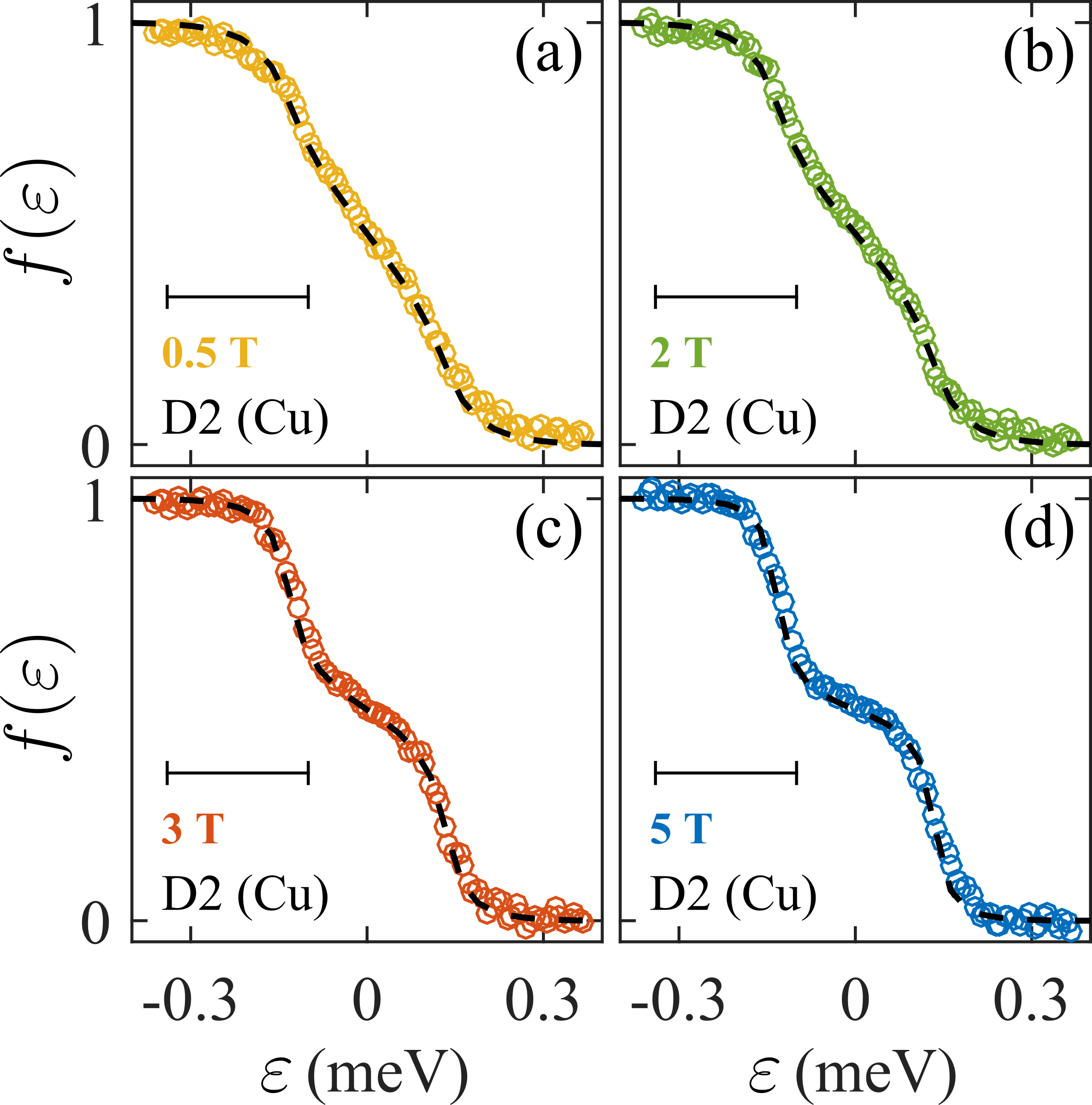
Usually, energy resolution of nonequilibrium electronic states is realized using a spectral sensor. A fundamentally different and more universal approach may consist in using the Fermi statistics of an electronic system. Although quantum mechanical Pauli correlations do not appear in the average current, they nevertheless contribute to the magnitude of the current fluctuations in a conductor. To date, this idea has only been experimentally realized for energy resolution of artificial periodic excitations in a coherent two-dimensional gas in the geometry of a quantum point contact. Naturally, the phase resolution is inextricably linked with the spatial smearing of the excitation, and therefore such an experiment is not suitable for any situation where a local measurement is of interest. Moreover, in all likelihood, such an experiment cannot be performed in a conductor different from quantum narrowing. The achievement of our work is the experimental demonstration of a method applicable to almost any conductor and excitation.
Publication:
Tikhonov,
E.S. Spatial and energy resolution of electronic states by shot noise
/ E.S. Tikhonov, A.O. Denisov, S.U. Piatrusha, I.N. Khrapach, J.P.
Pekola, B. Karimi, R.N. Jabdaraghi, V.S. Khrapai // Physical Review
B. – 2020. – Vol. 102, Iss. 8. – P. 85417
Section II, Physical sciences, Subsection 8, Theme 0032-2019-0015 “Collective phenomena in electron and exciton systems in semiconductor nanostructures"
Josephson structures with topological insulator barrier
D.S. Yakovlev, O.V. Scriabina, D.S. Lvov, S.V. Egorov, A.M. Kokotin, V.V. Ryazanov et al
Josephson submicron structures that use Bi2Te2.3Se0.7 perfect single crystals as weak bonds have been fabricated and studied. Single Josephson junctions exhibit typical Josephson magneto-transport characteristics of transitions with a normal metal barrier. Josephson junctions with two single crystals as weak coupling behave like two-contact interferometers (SQUIDs). Comparison with existing theories has shown that superconducting transport occurs mainly through ballistic channels.


Publication:
V.S.
Stolyarov, D.S. Yakovlev, S.N. Kozlov, O.V. Skryabina, D.S. Lvov,
A.I. Gumarov, O.V. Emelyanova, P.S. Dzhumaev, I.V. Shchetinin, R.A.
Hovhannisyan, S.V. Egorov, A.M. Kokotin, W.V. Pogosov, V.V. Ryazanov,
M.Yu. Kupriyanov, A.A. Golubov, D. Roditchev, Josephson current
mediated by ballistic topological states in 2Te2.3Se0.7 single
nanocrystals, COMMUNICATIONS MATERIALS 1,
38 (2020). https://doi.org/10.1038/s43246-020-0037-y
Section II. Physical sciences, Subsection 8, Theme 0032-2019-0014 “Physics and technology of new materials and structures "
Polymorphic transition in GaTe single crystals
E. B. Borisenko, D.N. Borisenko, A.V. Timonina, N.N. Kolesnikov
Gallium telluride is a AIIIBVI compound. Like other gallium chalcogenides, this material is a layered semiconductor. Unlike other crystals of this series, which have a hexagonal structure, GaTe in a stable state has a monoclinic lattice. Prior to this work, such crystals were obtained from the melt in quartz ampoules by the Bridgman method. Our studies have shown that it is possible to grow a hexagonal GaTe when it is grown in a graphite crucible with a hexagonal lattice. For the first time, it was found that at room temperature and normal pressure, a polymorphic transformation from a hexagonal to a monoclinic lattice occurs spontaneously within12 months. However, the internal stresses remaining after the transition completely relax within a few years. Structural evolution was recorded by Laue X-ray photography (see Fig. 1 a-d for some transition stages).The character of the phase transition is apparently diffusive. The cleavage plane is preserved, and the whole volume of the crystal remains a single crystal. Due to the volumetric transition cracks are formed as shown in Fig. 2 a, b.
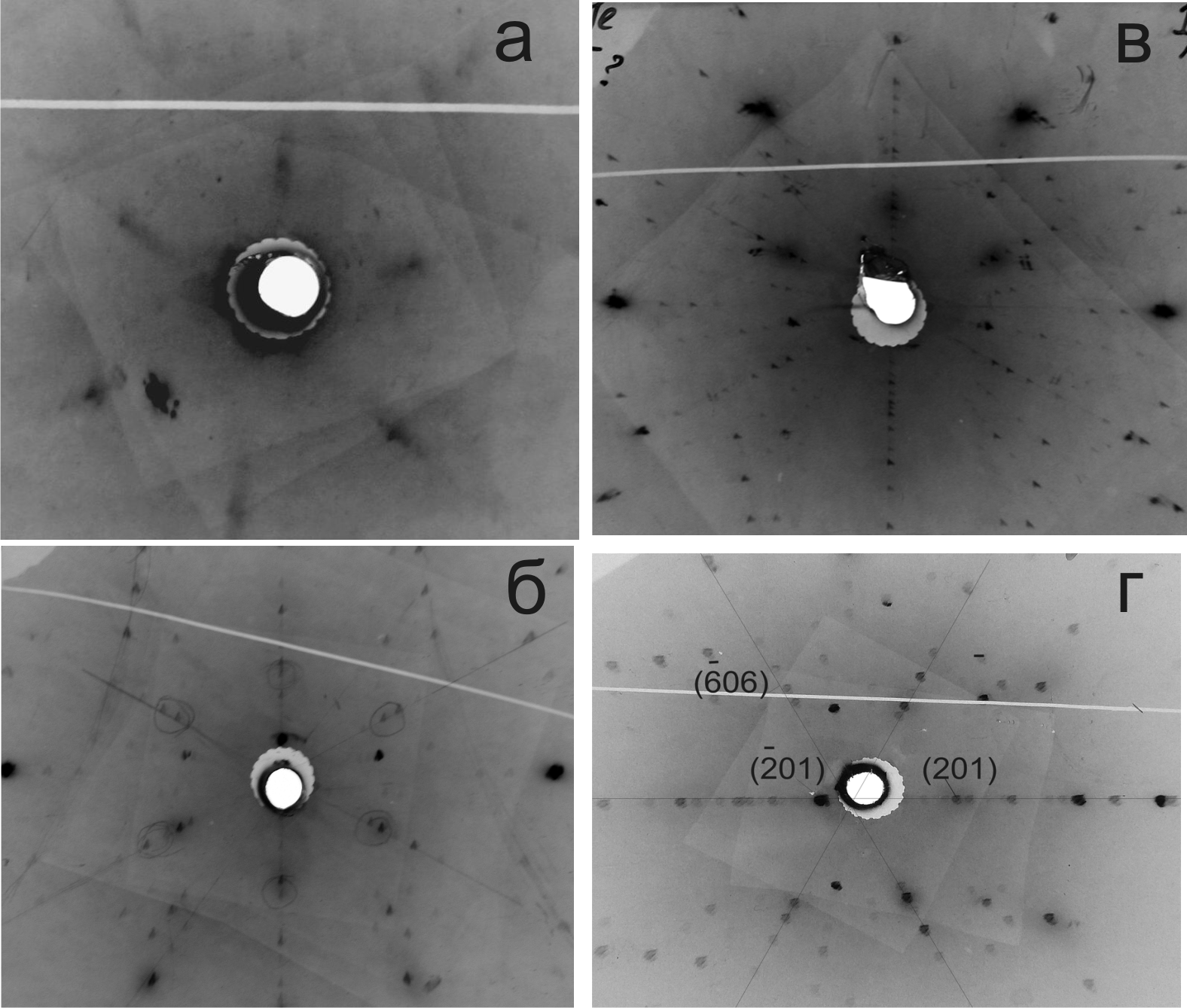

Publication:
Borisenko,
E. Nonvariant
polymorphic transition from hexagonal to monoclinic lattice in GaTe
single crystal /
E. Borisenko, D. Borisenko, A. Timonina, N. Kolesnikov // Journal of
Crystal Growth. – 2020. – Vol. 535. – p. 125548.
Section II, Physical sciences, Subsection 8, Theme 0032-2019-0014 “Physics and technology of new materials and structures "
Magneto-oscillations of the charge of a field-effect transistor that are due to a microwave-induced nonequilibrium electron energy distribution
S.I.Dorozhkin, A.A. Kapustin et al
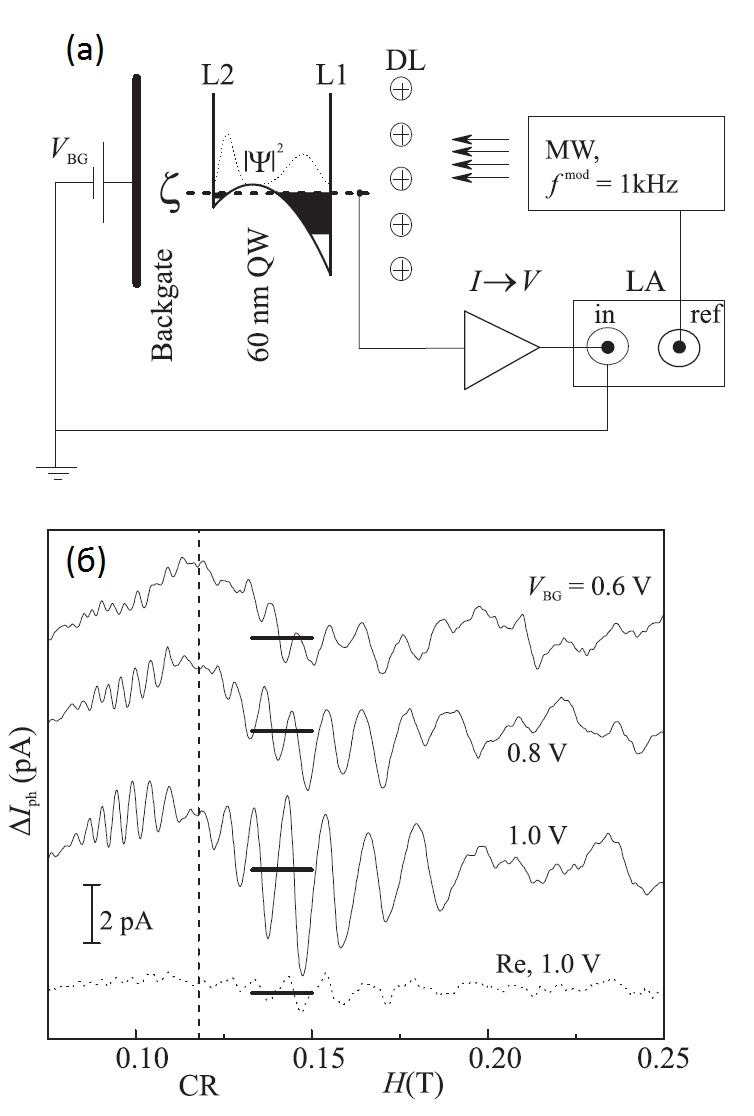
DL - doping layer that supplies electrons to the quantum well (QW);
LA - lock-in amplifier;
Backgate - heavily doped GaAs area.
Microwave-induced magneto-oscillations of the photocurrent between the gate and the channel of a GaAs / AlGaAs field-effect transistor with a bilayer (L1 and L2 in Fig. A) two-dimensional electron system (2DES) were detected at 1 kHz. The oscillations contain beats of two frequencies, which are determined by the commensurability of the intersubband splitting/irradiation frequency and the cyclotron frequency (see Fig. B, which shows the beat node in the cyclotron resonance (CR) area. At a constant radiation power, they are equivalent to magneto-oscillations of the field-effect transistor charge, which can only be explained by electron redistribution between the layers L1 and L2 under the influence of nonequilibrium distribution function. This underlies one of the existing explanations of microwave-induced MIRO resistance oscillations, which are widely known in 2DES, as well as explanations of the magneto-oscillations of MICO capacitance, which we discovered earlier in the same system under irradiation (Phys. Rev. Lett. 117, 176801 (2016)).
Publication:
Dorozhkin,
S.I. Magneto-Oscillations of the Charge of a Field-Effect Transistor
That Are due to a Microwave-Induced Nonequilibrium Electron Energy
Distribution / S.I. Dorozhkin, A.A. Kapustin, V. Umansky, J.H. Smet
// JETP Letters. –2020.–Vol. 111, Iss. 10.– P. 562–567.
Section II, Physical sciences, Subsection 8, Theme 0032-2019-0013 “Physics, technology and engineering of defects in advanced materials for alternative energy sources, photoelectronics and sensorics "
Spin state transitions in a new multi-magnetic molecular crystal
S. Simonov, L. Zorina et al
A comprehensive experimental and theoretical study of the structure and properties of a new molecular magnet [Fe (3-OMe-Sal2trien)] [Fe (tdas) 2] CH3CN showed that its magnetic properties are determined by the sum of contributions from the cation [Fe (III) (3-OMe -Sal2trien)] + with spin-crossover (SCO) properties (S = 1/2 or 5/2) and dimeric anion [Fe (III) (tdas) 2] 22- (S = 3/2) with strong antiferromagnetic interaction in the dimer. One-step SCO transition with hysteresis from a low-spin (LS) state to a high-spin (HS) state of Fe (III) occurs in the crystals, which is accompanied by a change in the conformation of the cationic molecule. Within the measurement range 2-350K at room temperature the transition is incomplete. the amount of HS phase according to X-ray structural analysis is 72%, which coincides with the results of magnetic and Mössbauer experiments. DFT calculations confirmed that a change in the conformation of the cation ethylene groups leads to stabilization of LS or HS phase and is a reference point for the spin state of Fe (III).
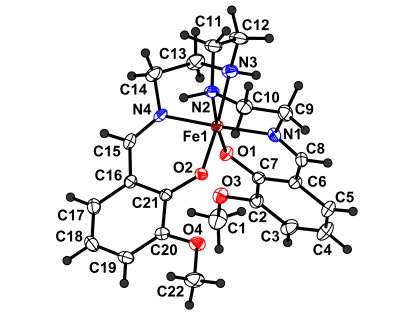
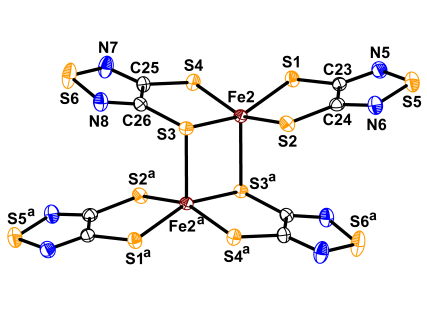
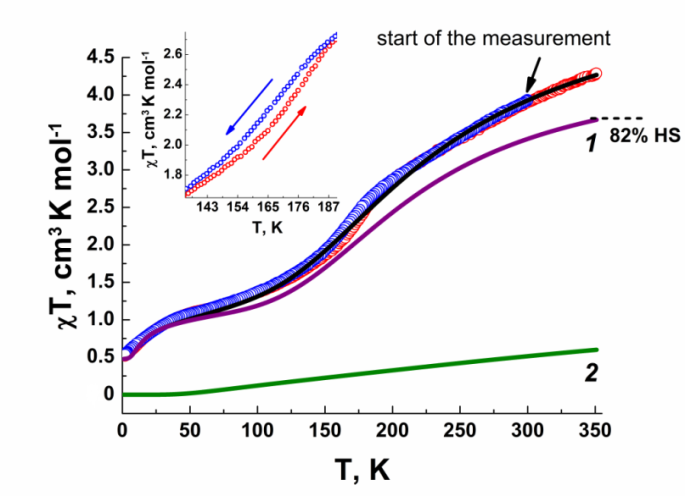
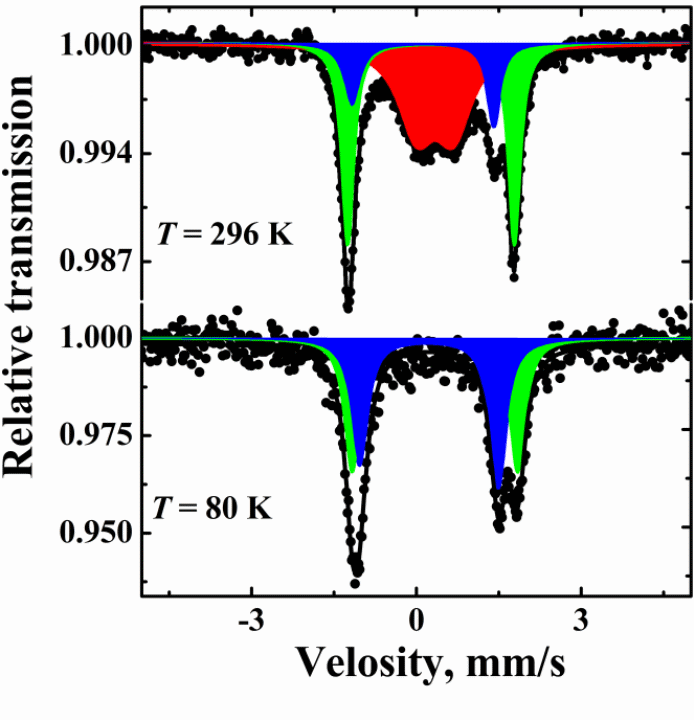
Publication:
N.Spitsyna,
N. Ovanesyan, M. Blagov, V. Krapivin, A. Lobach, A. Dmitriev, S.
Simonov, L. Zorina, L. Pilia, P. Deplano, A. Vasiliev, O. Maximova,
E. Yagubskii “Multi-magnetic properties of a novel SCO
[Fe(3-OMe-Sal2trien)][Fe(tdas)2]·CH3CN
salt” Eur. J. Inorg. Chem. (in print), DOI: 10.1002/ejic.202000873
Section II, Physical sciences, Subsection 8, Theme 0032-2019-0012 “Coherent states and phase transformations in liquids and solids
The formation of Pareto distribution in tracer systems on the water surface
S.V. Filatov, A.V. Poplevin, A.A. Levchenko, L.P. Mezhov-Deglin
We experimentally studied the statistics of clusterization formed by polyamide particles, which are used to visualize fluid flows on its surface. We found that on the surface excited by standing waves and immediately after turning off the pumping, when there is a strong vortex motion on the surface, the number of clusters on an area of 50x50 cm is approximately 10 ^ 5 with an area distribution different from normal. Over time, there is an increase in the average area of clusters on the water surface, which is mainly associated with an exponential decrease in the number of clusters. Within a characteristic time determined by the average background velocity of the liquid flow on the water surface, a power-law distribution of the normalized cluster density - the Pareto distribution - is established in the cluster system.
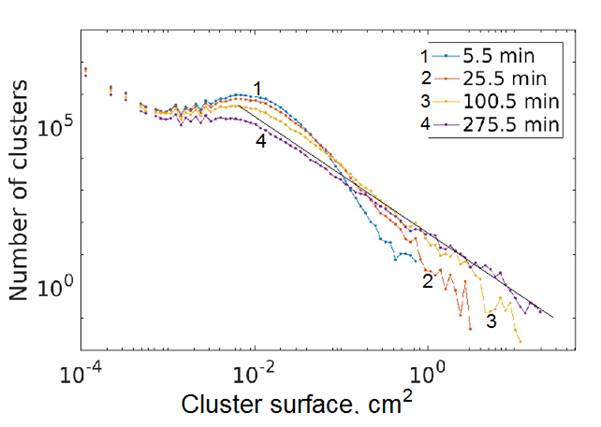
Publication: accepted in Results in Physics, 2020
Section II, Physical sciences, Subsection 8, Theme 0028-2019-0020 “New functional materials and structures
Tunable 3D/2D magnetism in the (MnBi2Te4)(Bi2Te3)m topological insulators family
V.N. Zverev et al
For the first time, the magnetic, transport and topological properties of the homologous series of crystals of topological insulators (MnBi2Te4) (Bi2Te3)m with m = 0 ... 6 have been studied, which, as was found, strongly depend on the value of m. The antiferromagnetic coupling between neighboring layers containing Mn strongly weakens as m increases from 0 to 2, and at m = 3 ferromagnetic ordering appears, in which the interlayer coupling practically disappears. At large values of m, a nontrivial magnetic phase arises, when at T <Tc there are two-dimensional ferromagnetic layers or blocks with disordered magnetization in the direction normal to the layers. The variety of magnetic phases of the (MnBi2Te4)(Bi2Te3)m family allows efficient engineering of heterostructures of this magnetic topological insulator family for use in quantum computation, as well as in antiferromagnetic and 2D spintronics.
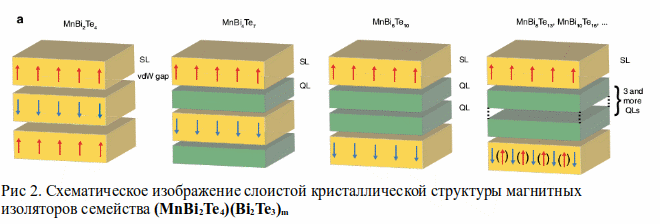
Publication:
I.I. Klimovskikh. Tunable 3D/2D magnetism in the (MnBi2Te4)(Bi2Te3)(m)topological insulators family / I.I. Klimovskikh, M.M. Otrokov, D. Estyunin, S.V. Eremeev, S.O. Filnov, A. Koroleva, E. Shevchenko, V. Voroshnin, A.G. Rybkin, I.P. Rusinov, M. Blanco-Rey, M. Hoffmann, Z.S. Aliev, M.B. Babanly, I.R. Amiraslanov, N.A. Abdullayev, V.N. Zverev, A. Kimura, O.E. Tereshchenko, K.A. Kokh, L. Petaccia, G. Di Santo, A. Ernst, P.M. Echenique, N.T. Mamedov, A.M. Shikin, E.V. Chulkov // NPJ Quantum Materials. – 2020. – Vol. 5, Iss. 1. – P. 54.
Section II, Physical sciences, Subsection 8, Theme 0032-2019-0013 “Physics, technology and engineering of defects in advanced materials for alternative energy sources, photoelectronics and sensorics
Lateral Josephson effect on the surface of the magnetic Weyl semimetal Co3Sn2S2
O.O. Shvetsov, V.D. Esin, Yu.S. Barash, A.V. Timonina, N.N. Kolesnikov, E.V. Devyatov
Like topological insulators and the quantum Hall effect regime, Weyl semimetals are characterized by topologically protected surface states. In such systems, they arise due to symmetry violation with respect to the center of symmetry inversion with respect to time reversal. This applies to magnetic Weyl semimetals. For magnetic topological semimetals, the effect of proximity to a superconductor is a new and rapidly developing area of research due to the mutual influence of superconductivity and magnetism under conditions of nontrivial topology.
We experimentally study the Josephson effect on the top of magnetic Weyl semimetal Co3Sn2S2. For the disordered magnetic state of Co3Sn2S2, we observe only the Andreev reflection at each of the leads. If the sample is homogeneously magnetized, we observe a Josephson current over the surface of the Weyl semimetal between the superconducting leads, which is a consequence of the transfer of the Josephson current by topologically protected Fermi-arc states in the Weyl semimetal Co3Sn2S2. The discovered Josephson effect is well pronounced even at 5 μm-long junctions, the critical value of the current demonstrates unusual magnetic field and temperature dependencies. This indicates the triplet nature of the Josephson current on Co3Sn2S2 surface.
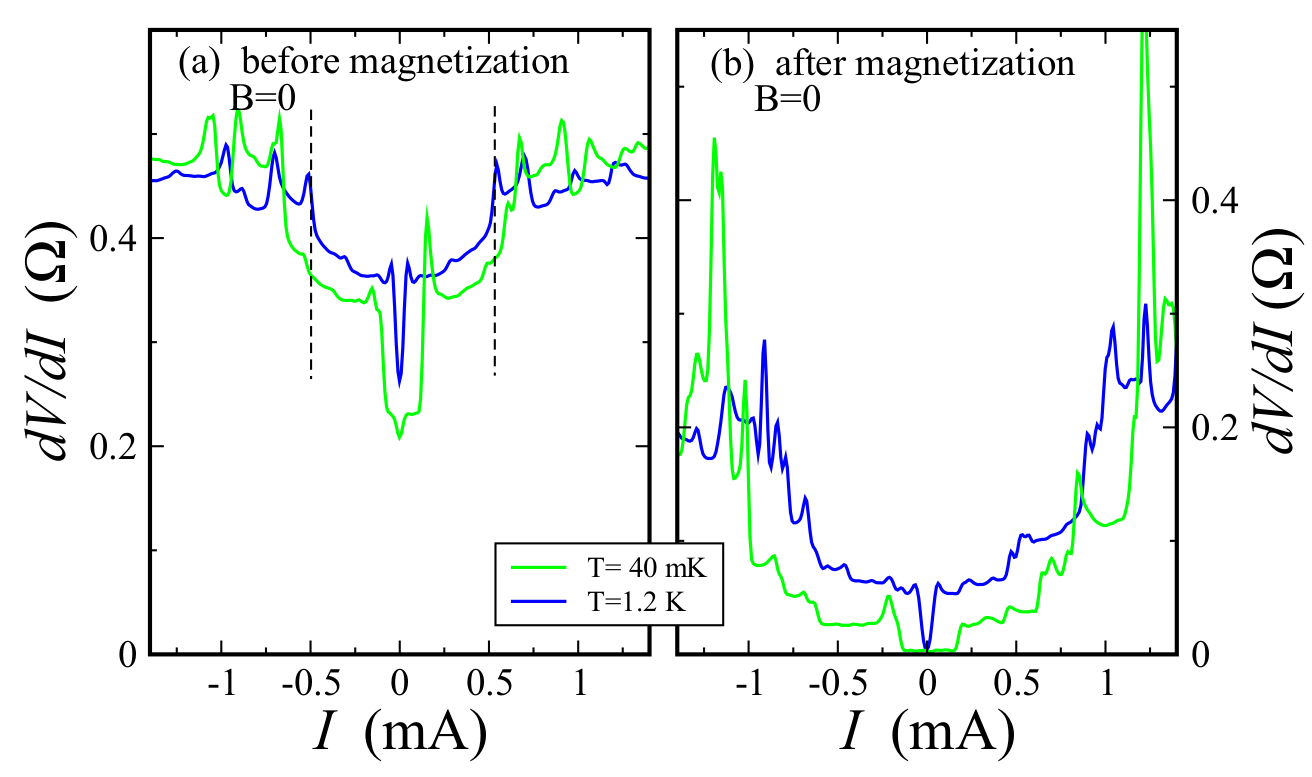
Publication:
Phys.
Rev. B 101, 035304 (2020), 10.1103/PhysRevB.101.035304
Section II, Physical sciences, Subsection 8, Theme 0032-2019-0015 “Collective phenomena in electron and exciton systems in semiconductor nanostructures
Vortices on the surface of a quantum fluid
A.A. Pelmenev, A.A. Levchenko, L.P. Mezhov-Deglin
We find for the first time that the occurrence of natural Rayleigh-Benard thermogravitational convection in the volume of a superfluid He II layer heated from above during the phase transition of a liquid from a superfluid to a normal state is accompanied by the formation of a weakly decaying vortex flow on the free surface of a normal liquid (Fig. 1, a). Nonlinear interaction of vortices with each other and with convective structures in the bulk of the layer leads to the formation of two large-scale vortices on the surface of the liquid in a wide cylindrical vessel (Fig. 1, d).
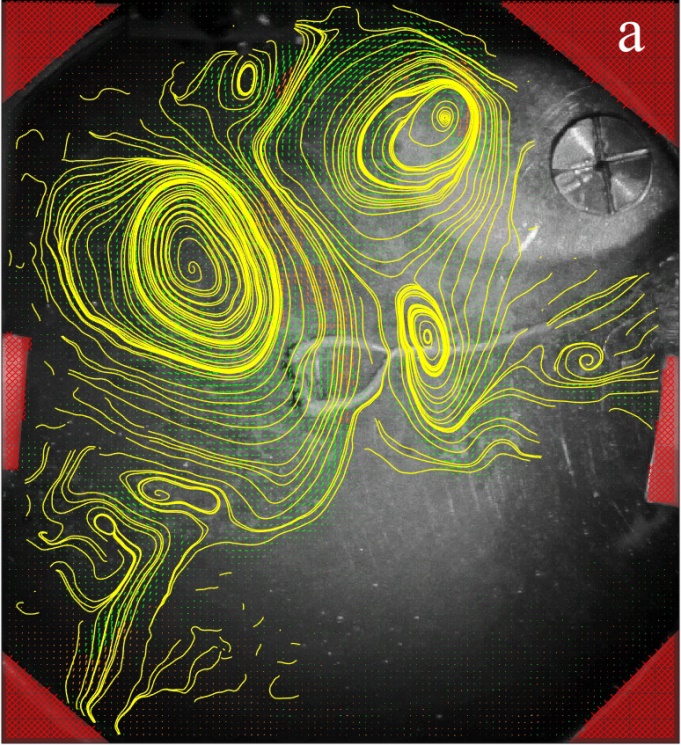
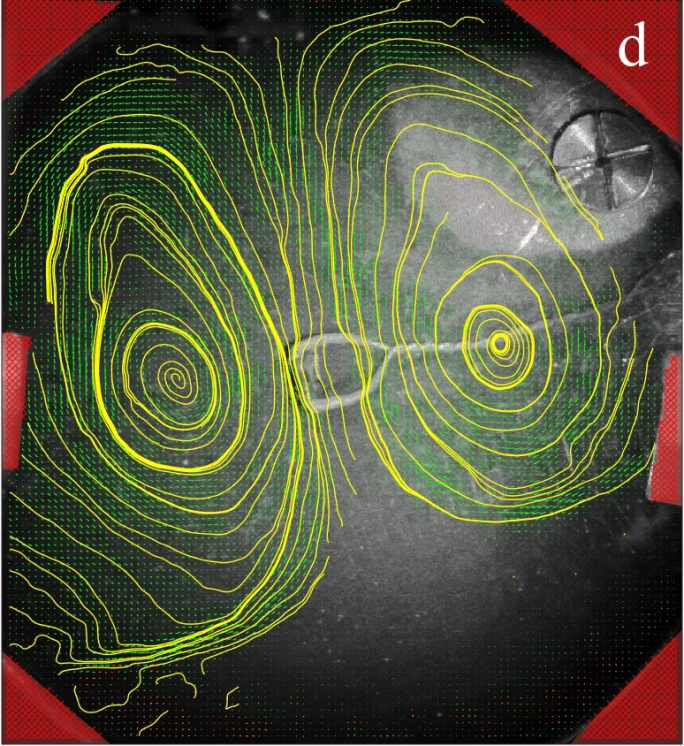
Publication: A.A. Pelmenev, A.A. Levchenko, L.P. Mezhov-Deglin, Low Temperature Physics, 46, 2, (2020).
Section II, Physical sciences, Subsection 8, Theme 0032-2019-0012 “Coherent states and phase transformations in liquids and solids
Direct measurement of picosecond heating kinetics of spin subsystem in semi-magnetic semiconductor nanostructures
A. A. Maksimov, E. V. Filatov, I. I. Tartakovsky et al
Semiconductor spintronics mainly focuses on injection, orientation, accumulation, and detection of carrier spins and of the possibilities of controlling them by optical and electrical methods. One of the important parameters determining the prospects for the practical use of a device is the speed of state switching in a spin system under external action. Semi-magnetic nanostructures based on II-VI materials are considered as promising model objects for possible applications in spintronics. Before our study was performed, the giant magnetization change rate in the spin subsystem of magnetic ions Mn2+ of semi-magnetic semiconductors upon interaction with hot carriers was estimated only from indirect data.
Our experimental study uses heterostructures of the second type. Direct measurements in our work demonstrate for the first time that the kinetics of magnetization changes in the spin subsystem of magnetic Mn2+ ions in semi-magnetic semiconductor superlattices based on (Zn, Mn)Se/(Be, Mn)Te is determined by the processes of energy and spin transfer from photoexcited holes due to exchange interaction with localized ion spins, and is of the order of 10-11s. This quantity is of certain fundamental interest for describing interaction processes of carriers with the spin subsystem of magnetic Mn2+ ions in semi-magnetic semiconductors. On the other hand, it confirms that these heterostructures are promising for possible applications as elements in spintronics.
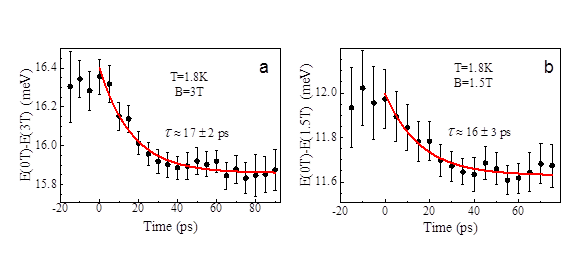
Publication: JETP Letters. – 2019 – Vol. 110, Iss. 12, – P. 806-811.
Section II, Physical sciences, Subsection 8, Theme 0032-2019-0015 “Collective phenomena in electron and exciton systems in semiconductor nanostructures
Ultra-high temperature molybdenum oxide composites
S.T. Mileiko, A.A. Kolchin, S.N. Galyshev, O.F. Shakhlevich, V.M. Prokopenko
Development of materials for a aircraft turbine rotor blade with an operating temperature of 1300°C and above is vital to reduce fuel consumption by at least 20%, as well as reduce harmful emissions into the atmosphere. Numerous laboratories in the world have been focusing their effort on this task for the past 2 decades, but still alloys with the required balance of crack, creep and gas corrosion resistance have not been discovered.
A research team of the Laboratory of Reinforced Systems, ISSP RAS, has developed a structure of oxide-molybdenum composites (Fig. 1), which inherits both the positive properties of molybdenum alloys developed and used as a matrix, and fiber composites (i.e. oxidation resistance; crack resistance and creep resistance, respectively).
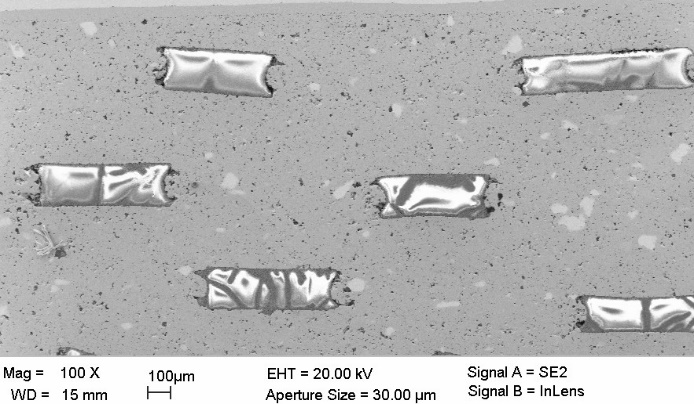
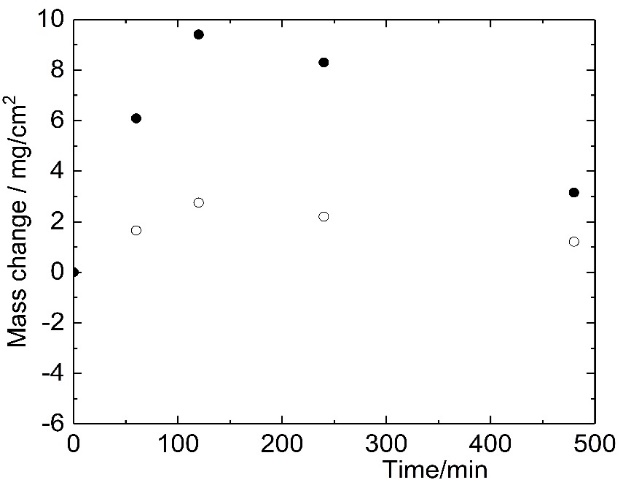
Our team has also created the basis for developing industrial production technology of the composites.
Publication:
S.T.
Mileiko, A.A. Kolchin, S.N. Galyshev, O.F. Shakhlevich, V.M.
Prokopenko, Composites Part A 132 (2020) Article 105830
Section II. Physical Sciences, Subsection 9, Theme 0032-2019-0014 “Physics and technology of new materials and structures”
Key implementable findings in 2020
Sapphire Microfocusing Needle Capillary for Laser Therapy and Surgery
Dolganova I.N, I.A. Shikunova, A.K. Zotov, V.N. Kurlov et al
A sapphire needle capillary for collimating and focusing laser radiation has been developed and obtained by the edge-defined film-fed growth technique (EFG) method (see Fig. 1). It features an as-grown surface quality, high transparency for visible and near-infrared radiation, high thermal and chemical resistance and the complex shape of the tip, which protects silica fibers. The focusing effect was demonstrated numerically (see Fig. 2) and observed experimentally during coagulation of the ex vivo porcine liver samples. This needle in combination with 0.22NA optical fiber allows intensive and uniform coagulation of 150 mm3 volume interstitially and 30 mm3 superficially by laser exposure with 280J without tissue carbonization and fiber damaging. In a controlled manner, it is possible to change the needle capillary geometrical parameters depending on tissue type, therapy method and the treatment protocol. The main field of application is oncosurgery. The device, of which there are currently no world analogues, is ready for practical use in laser coagulation and ablation systems for malignant tumors.
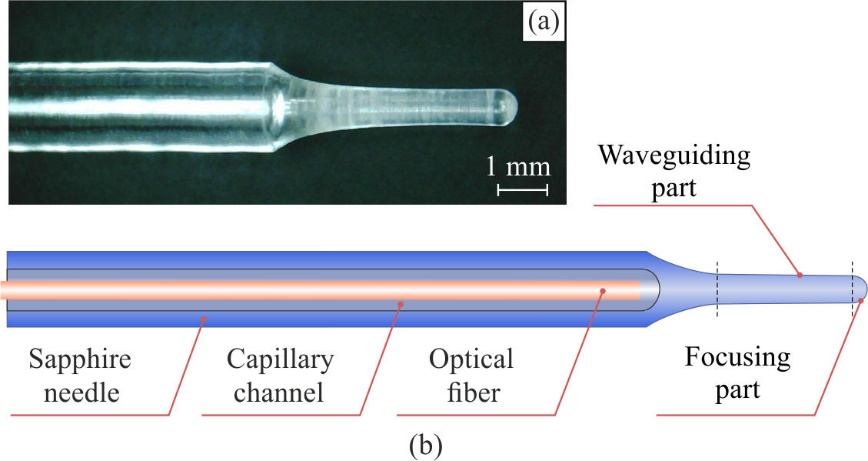
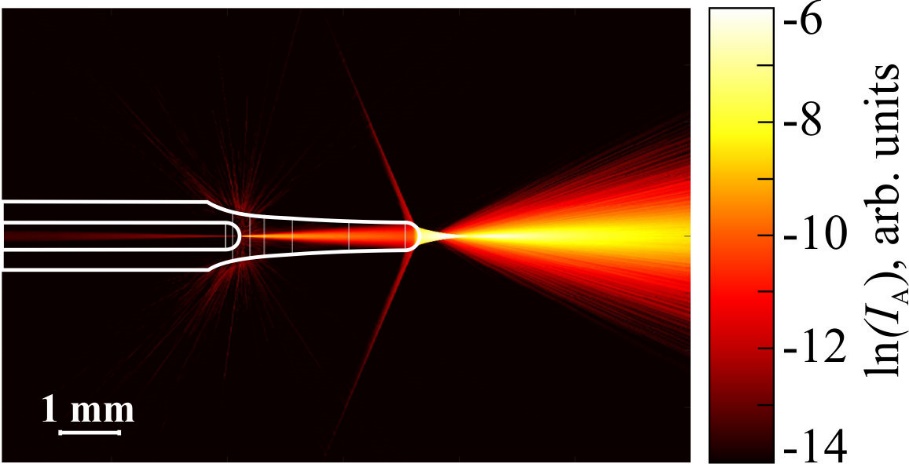
A positive decision was received for the Patent of the Russian Federation, application No. 2020128843 dated 08/31/2020, "Optical fiber microfocusing instrument" (authors: I.A. Shikunova, I.N. Dolganova, K.I. Zaitsev, V.N. Kurlov)
Publications:
- Dolganova I.N., Shikunova I.A., Zotov A.K., Shchedrina M.A., Reshetov I.V., Zaytsev K.I., Tuchin V.V., Kurlov V.N. "Microfocusing sapphire capillary needle for laser surgery and therapy: fabrication and characterization" - Journal of Biophotonics, 2020, e202000164. DOI: 10.1002/JBIO.202000164
- Dolganova I.N., Zotov A.K., Shikunova I.A., Zaytsev K.I., Aleksandrova P.V., Mukhina E.E., Kurlov V.N. “Experimental study of pointed sapphire needles for interstitial laser therapy” – Proc. SPIE, 11458 (2020) 114580E. doi: 10.1117/12.2559988
- Dolganova I.N., Katyba G.M., Shikunova I.A., Zotov A.K., Aleksandrova P.V., Naumova N.A., Shchedrina M.A., Zaytsev K.I., Tuchin V.V., Kurlov V.N. “Sapphire-based medical instrumentsfor diagnosis, surgery and therapy” – Proc. SPIE, 11363 (2020) 1136318. doi: 10.1117/12.2555320
Section II. Physical Sciences, Subsection 9, Theme 0032-2019-0014 “Physics and technology of new materials and structures”
Effective UV solar-blind optical filters based on K2NixCo1-x (SO4)26H2O mixed crystals
A.A. Zhokhov, V.M.Masalov, N.S.Sukhinina, G.A.Emelchenko et al
Mixed crystals K2NixCo(1-x) (SO4)2·6H2O (KCNSH) are promising materials for UV optical filters in the solar-blind spectral range (220 - 280 nm) due to effective radiation filtration in the UV range. To suppress spontaneous crystallization, an original technology was developed for growing mixed single crystals of K2NixCo(1-x) (SO4)2·6H2O (KCNSH) under large supercooling conditions of 5-10 ° C using a patented “rotary crystallizer” scheme. It was shown that K2NixCo(1-x) (SO4)2·6H2O crystals grown according to this technology demonstrate a high transmission level in the UV range, that level being close to the theoretical value for these crystals (see Figure 1), as well as low dislocation density (~ 103 -104 cm-2), which is 1-2 orders of magnitude lower than the existing data.



(b) Photo of a K2NixCo(1-x) (SO4)2·6H2O crystal grown from a solution with a Ni/Co salt ratio of 2/1 (crystal height 23 mm). The seed (KNSH marked by blue colour) is 20 mm in diameter and 3 mm high (b). (c) Transmission spectrum of KCNSH crystal.
Publications:
- Zhokhov A.A., Masalov V.M., Rudneva E.B., Manomenova V.L., Vasilyeva N.A., Sukhinina N.S., Voloshin A.E., Emelchenko G.A. Growth of mixed K2NixCo(1-x) (SO4)2·6H2O crystals for large supercooling without spontaneous crystallization in solution. Mater. Res. Express 2020 , 7, № 1, 016202 (7pps). DOI: 10.1088/2053-1591/ab5fa4
- Patent RU 2 725 924 C1, 19.02.2020 Device for growing mixed crystals of cobalt-nickel-potassium sulfate for optical filters in the ultraviolet range. Authors: A.A. Zhokhov et al.
Section II. Physical Sciences, Subsection 9, Theme 0032-2019-0014 “Physics and technology of new materials and structures”
New Ultra-Fast Sub-Terahertz Linear Scanner for Postal Security Screening
A.V. Shchepetilnikov, P.A. Gusikhin, V.M. Muravev, G.E. Tsydynzhapov, Yu.A. Nefyodov, A.A. Dremin, I. V. Kukushkin
A linear security scanner operating at a frequency of 100 GHz has been developed and tested, which allows fast screening at close range, for example, of postal parcels. The scanner represents a new approach to terahertz sensing, it includes a fast linear THz camera, as well as improved avalanche-diode oscillators, and is an effective non-destructive testing system that is an absolutely safe, fast, portable and cost-effective inspection tool. The test results demonstrate the scanner's outstanding ability to deliver, for example, continuous high-throughput parcel scanning. The system can perform real-time visualization with an effective spatial resolution of 3 mm, at a conveyor speeds of up to 15 m/s.
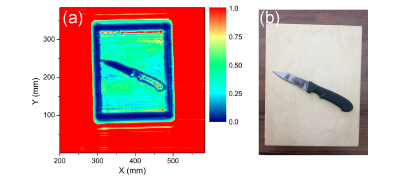
Publication:
Shchepetilnikov,
A.V. New Ultra - Fast Sub - Terahertz Linear Scanner for Postal
Security Screening / A.V. Shchepetilnikov, P.A. Gusikhin, V.M.
Muravev, G.E. Tsydynzhapov, Yu.A. Nefyodov, A.A. Dremin, I.V.
Kukushkin // Journal of Infrared, Millimeter, and Terahertz Waves. –
2020. – Vol. 41. – P. 655–664.
Section II, Physical sciences, Subsection 8, Theme 0032-2019-0015 “Collective phenomena in electron and exciton systems in semiconductor nanostructures
Automated portable gas analyzer based on Raman spectroscopy
M.N. Hannanov, A.B. Vankov, V.E. Kirpichev, L.V. Kulik, I. V. Kukushkin
A gas analyzer based on Raman spectroscopy is developed and tested that uses a portable Raman spectrometer, a 532nm laser and a hollow crystal light fiber. The new device allows for the rapid analysis of natural gas and mixtures of its derivatives, providing almost chromatographic accuracy, and is also capable of in situ analysis of gases that are inactive in the infrared range (hydrogen, oxygen, nitrogen, chlorine, etc.). The accuracy of the new device is comparable to the< accuracy of gas chromatography devices, but the analysis time is an order of magnitude shorter and the results are processed automatically.
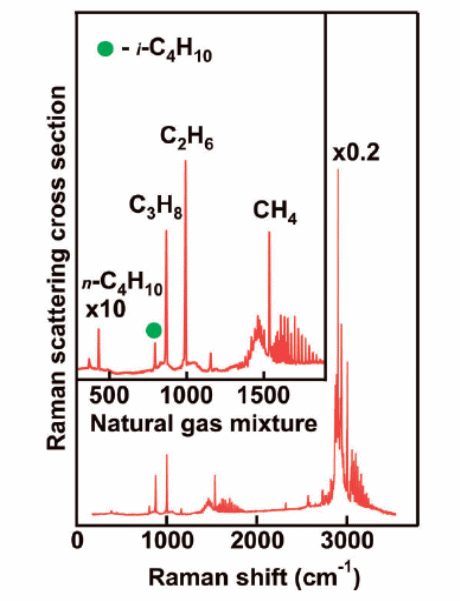
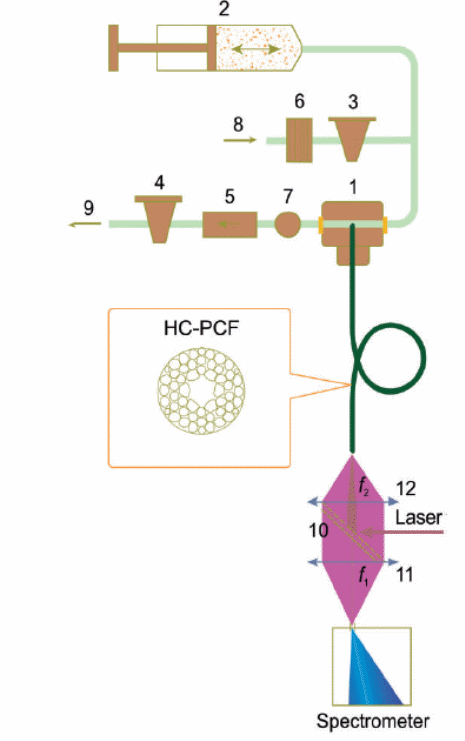
Publication:
M.N.
Khannanov. Analysis of Natural Gas Using a Portable Hollow-Core
Photonic Crystal Coupled Raman Spectrometer / M.N. Khannanov, A.B.
Van'kov, A.A. Novikov, A.P. Semenov, P.A. Gushchin, S.I. Gubarev,
V.E. Kirpichev, E.N. Morozova, L.V. Kulik, I.V. Kukushkin // Applied
Spectroscopy. – 2020. – Vol. 74, Iss. 12. – P. 1496–1504
Section II, Physical sciences, Subsection 8, Theme 0032-2019-0015 “Collective phenomena in electron and exciton systems in semiconductor nanostructures





